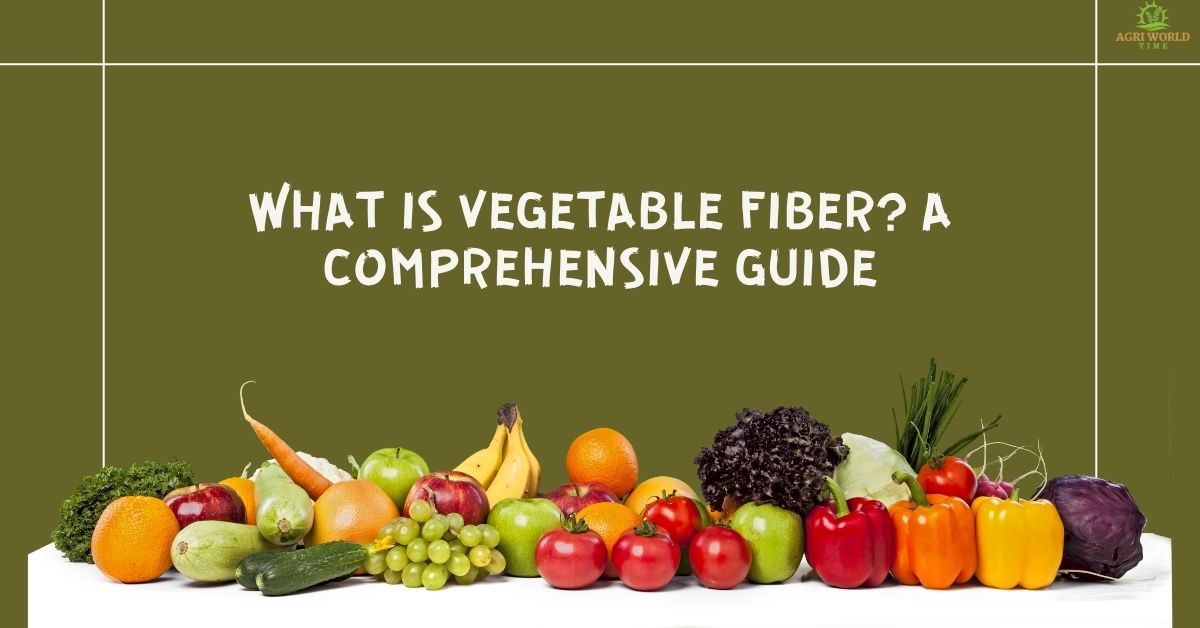The term “fiber” often takes center stage in nutrition and healthy eating. We hear about the benefits of a high-fiber diet for digestive health, weight management, and overall well-being. But what exactly is vegetable fiber, and why is it such a crucial component of our diet? This comprehensive guide delves into the fascinating world of vegetable fiber, its sources, types, health benefits, and tips on incorporating more of it into your daily meals.
What Is Vegetable Fiber?
Vegetable fiber, or dietary fiber, is a carbohydrate in plant-based foods. It is a crucial component of our diet, even though it is not digestible by our bodies’ enzymes. Instead, it passes through our digestive system largely intact, providing various health benefits.
Types of Vegetable Fiber
There are two main types of vegetable fiber: soluble fiber and insoluble fiber. Each class has unique properties and health benefits:
Soluble Fiber:
Dissolves in water to form a gel-like substance.
Found in oats, legumes, fruits (like apples and citrus fruits), and vegetables (like carrots).
Benefits include lowering cholesterol levels, regulating blood sugar, and promoting a feeling of fullness, which can aid in weight management.
Insoluble Fiber:
It does not dissolve in water and retains its shape throughout digestion.
Commonly found in whole grains, nuts, seeds, and many vegetables (such as broccoli and kale).
It promotes regular bowel movements, prevents constipation, and may reduce the risk of colon cancer.
Health Benefits of Vegetable Fiber
Digestive Health:
Vegetable fiber helps maintain regular bowel movements by adding bulk to stools and preventing constipation.
It supports a healthy gut microbiome by serving as food for beneficial gut bacteria.
According to the National Library of Medicine, recent economic modeling indicates significant savings in healthcare costs associated with functional constipation by increasing dietary fiber intake. If all American adults added just 9 grams of fiber per day to meet the FDA’s daily recommendation of 25 grams, it could save an estimated $12.7 billion annually. Even a 3-gram increase by half the adult population could result in over $2 billion in savings. These findings highlight the potential economic advantages of boosting dietary fiber intake.
Weight Management:
High-fiber foods are often filling, helping you eat less and control your calorie intake.
Soluble fiber, in particular, can help curb cravings and promote a sense of fullness.
Heart Health:
Soluble fiber can lower cholesterol levels by binding to cholesterol molecules and eliminating them from the body.
It may reduce the risk of heart disease by lowering blood pressure and inflammation.
Blood Sugar Control:
Soluble fiber slows down sugar absorption, helping stabilize blood sugar levels.
This is especially beneficial for individuals with diabetes or those at risk of developing the condition.
Weight Loss:
A high-fiber diet can be a valuable tool in weight management, as it promotes satiety and reduces overall calorie intake.
Colon Health:
Insoluble fiber contributes to a healthy colon by preventing constipation and potentially reducing the risk of colon cancer.
Sources of Vegetable Fiber
To reap the benefits of vegetable fiber, it’s essential to include a variety of fiber-rich foods in your diet. Here are some excellent sources of vegetable fiber:
Whole Grains:
Brown rice, whole wheat pasta, quinoa, and oats are packed with fiber.
Legumes:
Beans, lentils, and chickpeas are high in soluble and insoluble fiber.
Fruits:
Apples, pears, berries, and oranges are rich in soluble fiber, while kiwis and figs provide insoluble fiber.
Vegetables:
Leafy greens, broccoli, Brussels sprouts, ginger, and carrots are among the many fiber-loaded vegetables.
Nuts and Seeds:
Almonds, chia seeds, flaxseeds, and walnuts are excellent fiber and healthy fats sources.
Tips for Incorporating More Vegetable Fiber into Your Diet
Start Your Day Right:
Choose high-fiber cereals or oatmeal for breakfast, topped with fruits and nuts.
Snack Wisely:
For a quick fiber boost, keep healthy snacks like carrot sticks, celery, and hummus on hand.
Embrace Whole Grains:
Opt for whole-grain bread, pasta, and rice instead of their refined counterparts.
Mix and Match:
Create salads with various colorful vegetables and legumes for a nutrient-packed meal.
Experiment with Smoothies:
Add spinach, kale, or chia seeds to your morning smoothie for an extra fiber kick.
Read Labels:
Check food labels for fiber content, and choose products with higher fiber content when shopping.
Conclusion
Vegetable fiber is a nutritional powerhouse that offers a myriad of health benefits. From promoting digestive health to aiding in weight management and reducing the risk of chronic diseases, the importance of including sufficient fiber in your diet cannot be overstated. By incorporating a variety of fiber-rich foods into your meals and making smart food choices, you can harness the potential of vegetable fiber to boost your overall well-being. So, why wait? Start adding more fiber to your plate today and experience the transformative effects of this remarkable nutrient.

